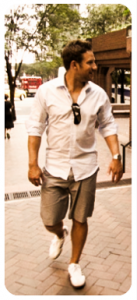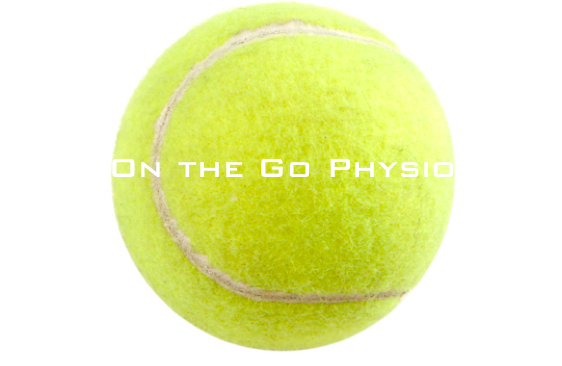A Tennis Ball A Day....
Did you know? It's Travel Beauty Month. Yesterday, we did a travel skin care secrets interview with internationally acclaimed Dermatologist and best-selling author, Dr. Murad, and one lucky reader will win his Radiant Skin Renewal Kit.
{ Editor's Note: Steve is a sport enthusiast. He is also a fan of tennis, especially while traveling. Working as an Orthopaedic Physiotherapist and Acupuncturist in Vancouver, BC, he never leaves home without a firm tennis ball; for more reasons than one. Steve and I were recently commiserating about the aches and pains---think uncomfortable plane seats, a new bed every few nights and standing in line for hours---associated with travel.
Editor's Note: Steve is a sport enthusiast. He is also a fan of tennis, especially while traveling. Working as an Orthopaedic Physiotherapist and Acupuncturist in Vancouver, BC, he never leaves home without a firm tennis ball; for more reasons than one. Steve and I were recently commiserating about the aches and pains---think uncomfortable plane seats, a new bed every few nights and standing in line for hours---associated with travel.
I told him about an incident I recently had on a red-eye to NYC, involving intense pain in my lower back and my DIY attempt to fix it by piercing the area with a closed Tide pen {my logical way of trying to iron out the pain at 4am}. He told me a tennis ball works much more effectively as compact, on-the-go muscle treatment when your Physio or Massage Therapist don't happen to be on vacation with you. Here are his tips for alleviating and/or preventing travel aches and pains with a tennis ball. I'll never take another trip without a tennis ball in my carry-on!}
In my practice, an indispensable piece of exercise equipment is the tennis ball. I've seen clients reduce pain and increase flexibility by targeting painful areas of their bodies with the tennis ball. The body’s natural response when we develop an injury is to trigger the surrounding muscles to shorten causing additional pain and limitation with movement. By working the ball into these painful areas called trigger points, we can release the tension of these tight bands of muscle. But the benefits are not only for people with pain, this technique is useful for freeing up muscles that become chronically tight, especially with prolonged sitting and standing during travel. Common areas of muscle tightness and pain include:
The Neck For relief, lean up against the wall with your feet staggered, one close to the wall and one farther away. Use your body weight to compress the tennis ball into the muscles between the shoulder blades. This target area extends from the base of your neck down to the bottom of the shoulder blade about 5cm from the spine. Hold the ball for 20 seconds per point, 5 points.
The Low Back Lie on your back placing the ball underneath the buttock muscle roughly 5cm below your belt. Note that this ball position adressess the buttock muscle which attaches up into the connective tissue of the low back, which becomes very tight with low back injury. Rotate your body slightly towards the side the ball is under, feeling the sore points and holding for 20 seconds per point. Find 5 different areas throughout the buttock by shifting the ball position slightly.
The Shoulder{s} Lean against the wall placing the tennis ball in the triangle-shaped area of your shoulder blade. You will need to lean against the wall with your body turned roughly 45 degrees to the side you have the ball on to ensure your shoulder blade is flush against the ball. Also, place the ball in the pectoral muscle 3cm below the collar bone and lean up against the wall. Find 3 spots along the length of the pec muscle extending from your shoulder towards your breast bone.
Please Note Note that the sensation should be strong but not painful. This technique should also never cause pain that radiates away from the location of the ball. The exercise should be done once per day only. The normal reaction is for lessening of muscle tension and pain. If symptoms increase after exercise, discontinue this technique. Note that these recommendations are not appropriate for everyone. If you have a history of severe pain, please consult your Physiotherapist before beginning this program.
{Steve Nairn BSc., MSc.PT, has built his practice in Vancouver, Canada at Sitka Physiotherapy and Wellness. He holds a Masters Degree in Physiotherapy from McMaster University plus his Advanced Manual Therapy Certification (Part B level manual therapy), and level 3 Medical Acupuncture from the Acupuncture Foundation of Canada Institute. His approach to wellness also incorporates exercise, education and soft tissue work. Steve [at] vancouverphyisotherapy [dot] com}
More Healthy On the Road Content Why Drink Water While Traveling Summer Paddling Healthy Road Trip Choices Make Any Trip Style Healthy The 20-min Exercise Itinerary
[Photos sourced online]
